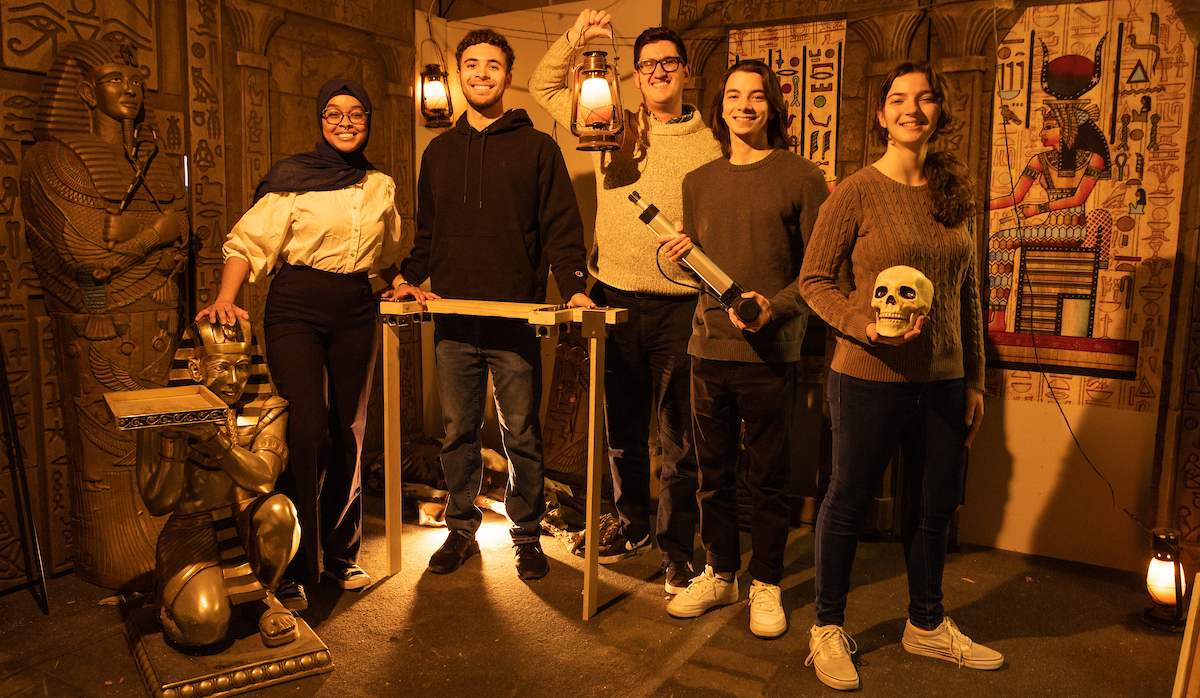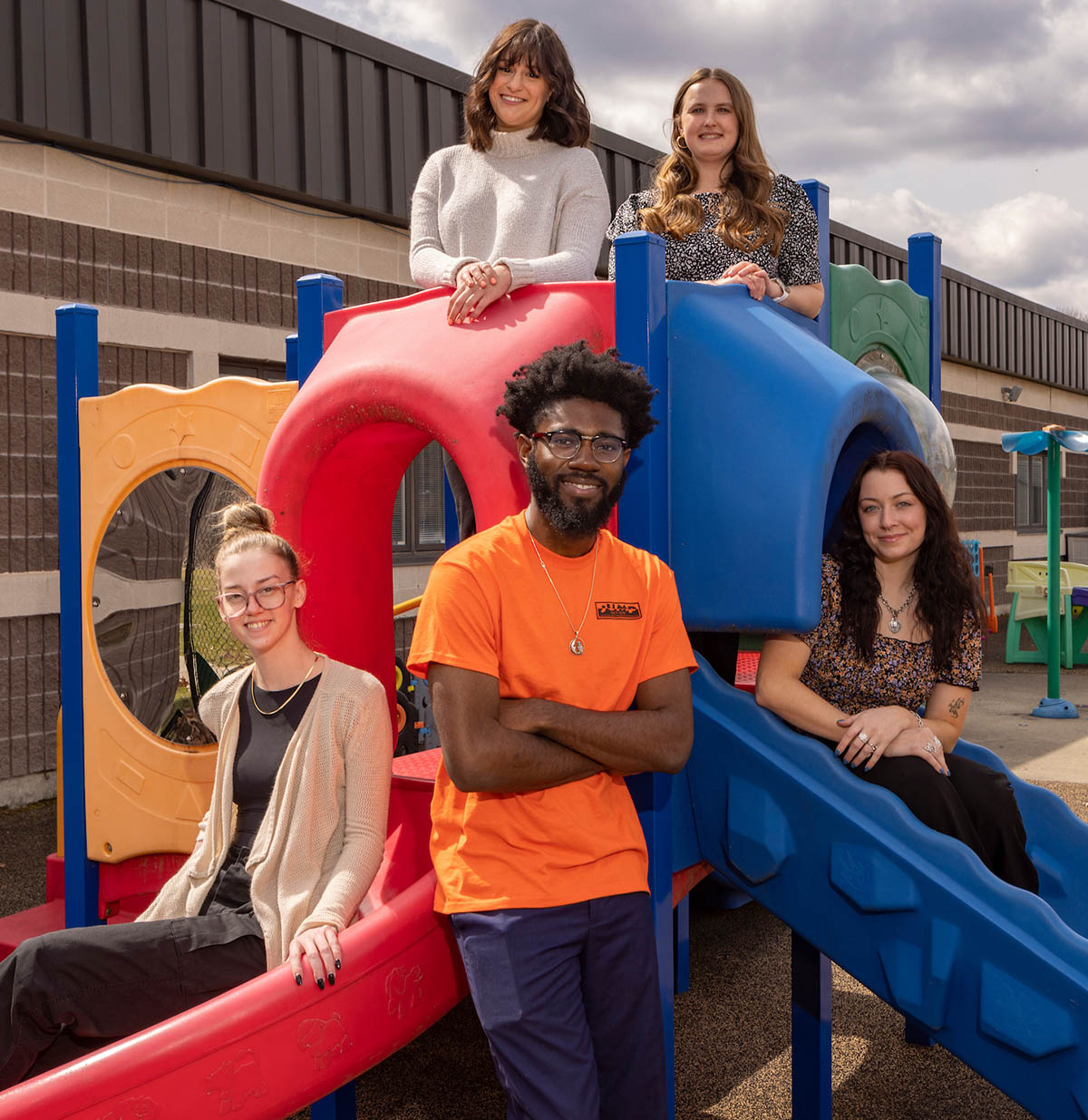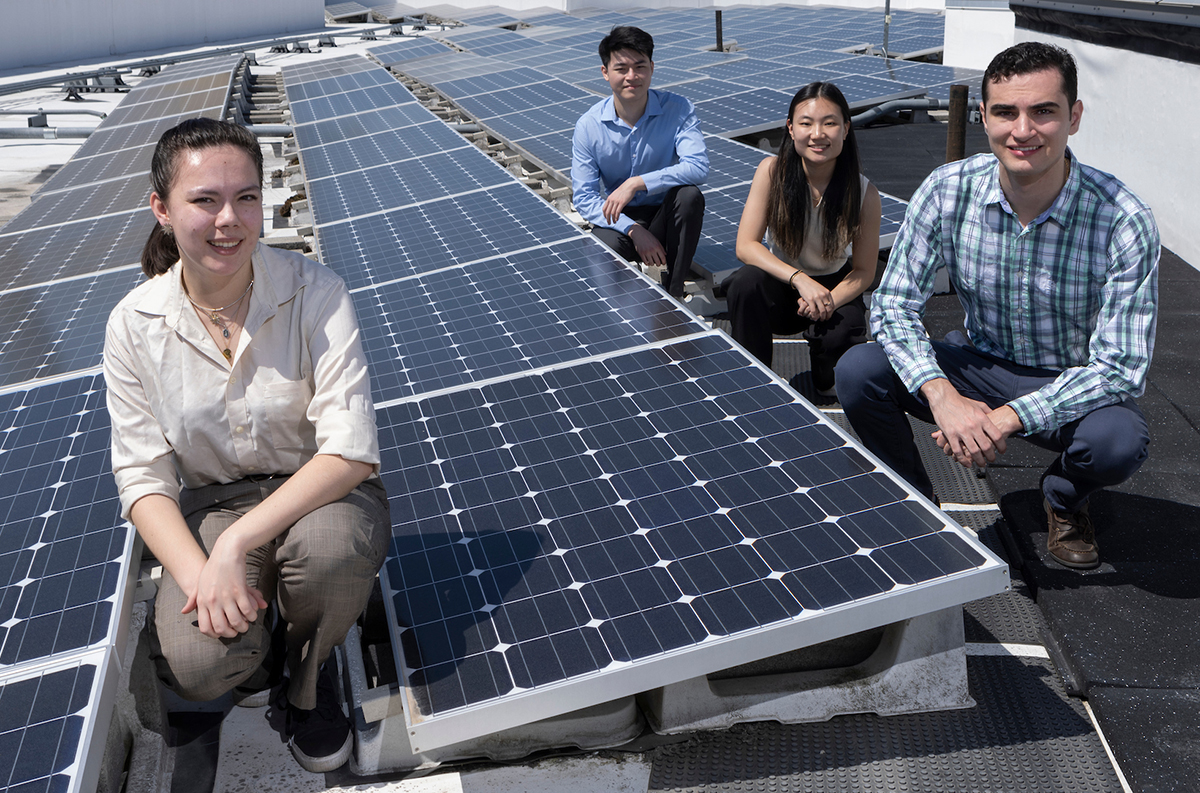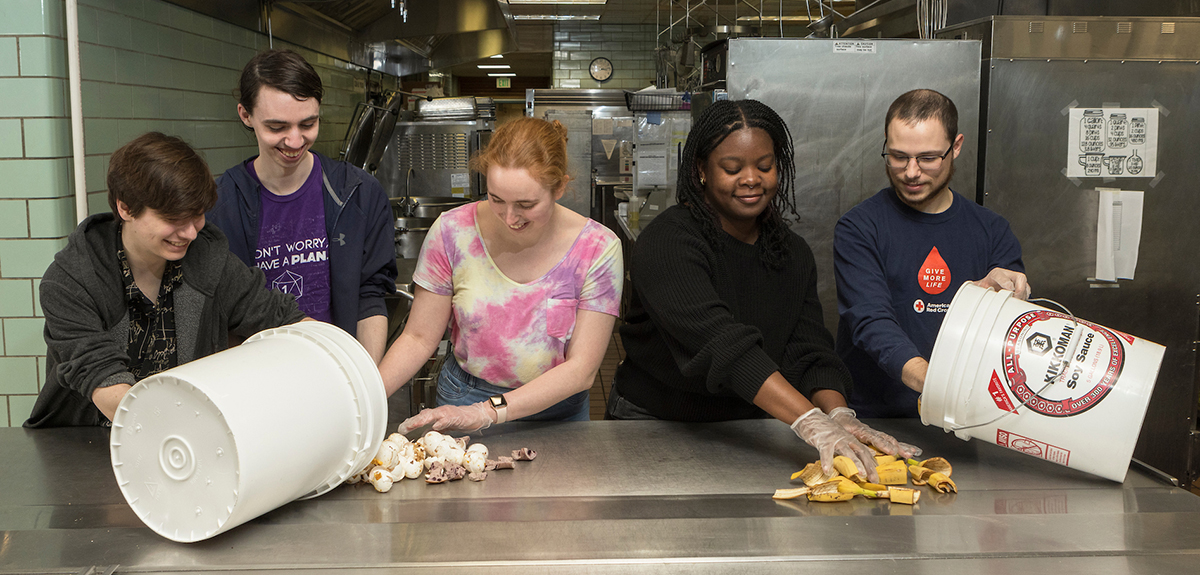Watson College senior capstone projects put knowledge into practice
Before earning diplomas, many undergraduates need to complete projects addressing real-world challenges

Before earning diplomas, many Watson College undergraduates need to complete senior capstone projects addressing real-world challenges. Here are projects from each Watson department this academic year (except computer science, which doesn’t have a capstone requirement).
MECHANICAL ENGINEERING
Advisor Colin Selleck (lecturer); students Eric Cadalzo, Jacob Lauer, Hannah Neusner, Baiyina Richardson, Cameron Storz (all Mechanical Engineering)
Inside an ancient Egyptian tomb stands a pair of roughly 7-foot-tall pillars. Between them, a sarcophagus.
Before time runs out, your task is to rotate the pillars and figure out a secret code inscribed on them. Once you succeed, the sarcophagus will levitate and reveal the clue you need to get out.
If you’re wowed by the levitating crypt, Baiyina Richardson and her team have done their job. Working with Xscapes in Binghamton, they are contributing to a new Egyptian-themed escape room at the Southern Tier Independence Center. Six Watson teams this year worked on projects at Xcapes, which supports STIC’s mission to assist people with disabilities.
Richardson, the project leader, says the challenge was keeping the puzzle simple while maintaining a realistic atmosphere. It was also a unique opportunity to put classroom theories of mechanical engineering into practice in an entertaining way.
They used a rotating tray for each pillar to help users move them, and a forklift for the levitating sarcophagus. Part of the fun was exploring various methods — including electromagnets — before settling on the most effective design.
“This project really puts life into all the teaching we’ve been given,” Richardson says. “We research what materials work best and think about how people interacting with the escape room might affect the mechanics of our design. It’s interesting how many aspects you don’t consider until you start putting the pieces together.”
When their portion of the escape room is completed, Richardson hopes anyone participating will truly feel as though they’re trapped within an ancient tomb, just like those featured in the 1999 film The Mummy or one of the Indiana Jones movies.
“I hope people have fun when they enter this room, but also feel that time crunch and start channeling their inner Indiana Jones by quickly swishing everything around and hoping things come together fast,” Richardson says. “I want people to feel that magical surprise when the sarcophagus levitates, as though they’re truly stuck back in time and need to escape.”
— Anthony Borrelli
SYSTEMS SCIENCE AND INDUSTRIAL ENGINEERING
Advisor Distinguished Service Professor Raymond Romanczyk (Department of Psychology, Harpur College); students Emma Bachyrycz, Iris Bursey, Isabelle Hanchett, Sara Hassan, Josef Thompson (all Industrial and Systems Engineering)
At Binghamton University’s Institute for Child Development (ICD), optimizing child service schedules can be a challenge for the staff members dedicated to providing support for children with autism.
“Our end goal is to save the ICD staff time and effort so that they can focus on providing services for students and their families,” Isabelle Hanchett says.
When designing a drag-and-drop scheduling program that would be more immediate and time efficient, the industrial and systems engineering seniors wanted to create something more user friendly “so that any staff member taking on the role of scheduling can quickly learn how to use our platform,” she adds.
Before this project, team members were not familiar with the coding languages needed to design a new scheduling program, but they quickly stepped up to the challenge. Working with JavaScript and HTML, these seniors successfully offered a solution for caring instructors.
“They have been exceptional,” says Distinguished Service Professor and ICD Co-Director Raymond Romanczyk. “They have rapidly adjusted to a very complex human resource allocation problem and are bringing to bear their previous coursework, skills and knowledge as well as developing new skills necessary to solve our needs. My staff is going to jump with joy when we implement this project.”
However, it is not an easy road to more efficient health services.
Previously at the ICD, staff members used Excel spreadsheets that did not function well with frequent scheduling changes and constant moving parts, a technological shortcoming that does not cooperate well with chaotic and fast-paced healthcare settings.
The ISE team had to incorporate those moving parts into its project design and decided to implement a system that will have working schedules for each day of the week. Now, the staff will not have to invest extra time into weekly scheduling and can quickly alter the premade schedule as needed.
“It’s really important to make sure that the right people are in the right classroom providing the right services,” Emma Bachyrycz says.
Sara Hassan describes the development of their senior project as incredibly rewarding: “It’s a great experience for all of us. It feels like we’re ready to go into the world and really help people.”
— Hadley Robbins ’24
ELECTRICAL AND COMPUTER ENGINEERING
Advisor Associate Professor Tara Dhakal; adjunct faculty advisor Detlef Smilgies; graduate student advisor Abdel Khammash; students Rachael Kohler, Anthony Pedretti (Electrical Engineering), Jamie Kim, Ethan Man (Computer Engineering)
Solar panels have been the leading choice for green energy for years, but the toxic chemicals that remain after discarding are a great concern. This ECE capstone project — sponsored by the Avangrid Foundation — uses an autonomous system for synthesizing perovskite solar cells, which could be the key to reducing these chemicals.
The final design has a four-station system with a 3D-printing machine, all encased in a glove box. The machine acts as the robot hand, moving chemicals from the precursor station to the mixing station using an automatic pipette. The mixed chemicals are then dispensed onto a glass slide at the third station in a spin coaster and heated at the final station on a hotplate. A perovskite solar cell is produced with minimal human labor.
“Perovskite cells are a promising alternative to silicon ones. Their production and efficiency are pretty high compared to the silicon technology,” Rachael Kohler says. “It’s energy intensive to mine silicon and use it for scientific things, since you have to purify it.”
Another improvement with perovskite cells is that they require much less material compared to traditional photovoltaic cells, because their material absorbs light so well. This reduces the volume of toxic chemicals (such as heavy metals) that can leach into soil and spread rapidly after discarding.
The team hoped to incorporate machine learning to automate testing and data-gathering, eventually teaching the machine the optimal chemical composition for a good perovskite solar cell entirely hands-off. However, the team members needed the entire fall semester to design the system, forcing them to put the machine learning aspect as a stretch goal instead.
“The CASP Lab has been working on this for a long time, so they have some idea of what works and what doesn’t, but this process takes very long to do by hand,” Kohler says.
With chemistry, higher levels of machinery and machine learning being foreign subjects to some or all team members, this project pushed the limits of their skills.
“We’re hoping that this reaches into a larger family of perovskites that we haven’t discovered yet,” Jamie Kim says.
— Jamie H. Nguyen ’23
BIOMEDICAL ENGINEERING
Advisor Professor Sha Jin; students Kristen Allen, Gale Carpenter, Blake Tochilovsky, René Walker (BME), Matthew Arndt (ME)
Petroleum-based plastic has negative effects on the environment and raises concerns about the limited natural resources used to produce them. As a green alternative, bioplastic can be produced from sources such as vegetable oil and starches. This BME team is designing a system to produce lactic acid from food waste.
“The purpose of producing lactic acid is that it can be used to generate bioplastics, but our job is to just generate lactic acid,” Kristen Allen says.
The team came up with a three-part process that handles breakdown, fermentation and separation of food waste. A pre-built composter called LUMI serves as the mechanical breakdown system, where the food waste is composted and dehydrated without killing the bacteria present in the waste. The composted waste is moved to the fermentation system, a sealed tank with a mixing motor that agitates it to encourage the bacteria to perform anaerobic fermentation (non-oxygen fermentation) and produce lactic acid. Then the fermented slurry goes to the separation system, where the solid is removed from the liquid.
The liquid will be saved for a capstone project next school year, where it will be purified and used to produce bioplastic. The solid waste can be used as normal compost.
Since the fermentation tank needs to be sealed to prevent contact with oxygen, temperature and pH level monitoring have to be automated. Originally, the goal included automating the whole process, but the team pivoted during its first meeting at the Fabrication Lab because of the difficulty of designing and putting together the prototype.
The team is also taking this project to the Integrated BME Entrepreneurship Training (IBET) program, where they emphasize this system’s value in intercepting the waste between collectors and processors, thus preventing unnecessary waste.
Matthew Arndt has hopes for the system’s future applications: “Ideally, we can upscale the system someplace and put it to use in a garbage system so they can use it to produce the bioplastic. A lot of 3D-printed material is based on acid, and it is a fast-growing industry.”
— Jamie H. Nguyen ’23




